Company Updates and News

9th April 2025 – What other components are required for a solar array?
In addition to the solar tiles themselves, a complete solar array in the UK (or anywhere) requires several other key components to function effectively and efficiently. These include:
- Inverter:
The inverter is a crucial component that converts the direct current (DC) electricity generated by the solar tiles into alternating current (AC), which is the type of electricity used by most household appliances and fed into the national grid. - Mounting System:
Solar tiles need a sturdy and reliable mounting system to be fixed on the roof or on the ground. The mounting system must be weather-resistant and able to withstand the UK’s often windy and rainy conditions. Solex Energy Ltd have their own proprietary mounting system. - Battery Storage (Optional):
While not strictly necessary, battery storage allows you to store excess energy generated during the day to be used when sunlight is not available (e.g., at night or on cloudy days). - Charge Controller (for Battery Systems):
If a battery storage system is in place, a charge controller is used to regulate the flow of electricity into and out of the battery to prevent overcharging or discharging, thus prolonging the lifespan of the battery. - Cabling and Wiring:
Proper cabling is necessary to connect all components of the system, from the solar tiles to the inverter, battery storage (if applicable), and the grid connection. All wiring must be installed in a way that meets safety regulations and minimizes energy losses. - Electrical Meter:
An electrical meter is used to measure the amount of electricity being generated, consumed, and potentially exported to the grid. This is often a smart meter, which can provide real-time data and allow for remote monitoring. - Grid Connection (Optional):
If the solar system is designed to feed power into the national grid (which is common in the UK), you will need a grid connection. This might require permission from your local utility company depending on the size of the electricity generation, and possibly some additional equipment, such as a grid-tie inverter or export limiter. - Protection Devices:
These include fuses, circuit breakers, and other protective devices that ensure the system is safe by preventing overcurrent, overvoltage, or short circuits. Protection devices help protect the system and your property from electrical hazards. - Monitoring System:
A monitoring system (either integrated into the inverter or as a separate device) helps track the performance of the solar array. It provides insights into how much energy is being generated, identifies faults, and helps with maintenance and optimization. This is typically an app produced from the same company who manufacture the inverter.
So, while solar tiles are the primary component, a solar array requires a combination of these additional components for a fully functional and efficient system.
28th March 2025 – Understanding the ROI for Solar Photovolatic Roofing Tiles
Photovoltaic roofing tiles are one option for homeowners looking to harness renewable energy in a visually appealing way. However, before making a decision, it’s important to understand the return on investment (ROI). In this article, we will examine the ROI for PV tiles for a property using 4,000 kWh of electricity annually, close to the UK average.
Material and Installation Costs
The total cost of installing photovoltaic roofing tiles consists of two main components:
- Material cost: With a cost of £95 per square meter, the price for the tiles will depend on the roof’s size. For example, a 40 m² roof would cost approximately £3,800 for the tiles.
- Installation cost: Installation typically costs between £8,000 and £10,000, bringing the total cost for the installation to between £11,800 and £13,800 for a 40 m² roof.
Energy Generation
Solex PV tiles produce 170 Wp (watts peak) per square meter. Over the course of a year, the energy generated can be calculated assuming an average annual performance ratio of 80% (which accounts for real-world conditions such as temperature, shading, and system inefficiencies), the system will produce approximately:
- Annual energy generation: 6.8 kWp (40 m² of 170Wp tiles) * 0.80 = 5.44 kWh/day. Over a year, this equates to 1,980 kWh of energy.
This output is still short of the 4,000 kWh annual electricity usage of the property, meaning the PV tiles will cover around 50% of the property’s energy needs.
ROI Calculation
Assuming the average UK electricity price is £0.30 per kWh, the 1,980 kWh generated by the PV tiles would offset around £594 in annual energy costs.
With the installation cost between £11,800 and £13,800, the estimated payback period is:
- At £11,800: Payback period is approximately 20 years.
- At £13,800: Payback period extends to about 23 years.
These estimates assume a steady electricity price and optimal system performance, but they do not take into account potential savings from government incentives, maintenance costs, or rising energy prices, which could shorten the payback period.
Conclusion
Photovoltaic roofing tiles offer a visually appealing and environmentally friendly way to reduce energy costs. However, the ROI depends on factors such as installation costs, the size of the system, and seasonal variations in energy generation. In this scenario, while PV tiles will offset around 50% of a household’s electricity consumption, the initial investment means the payback period can be relatively long, ranging from 20 to 23 years. Homeowners should consider these factors, along with any potential subsidies or tax breaks, when evaluating the overall financial benefits of installing photovoltaic roofing tiles.
11th February 2025 – Fire testing to CEN TS 1187 T4
MCS 012 – The Solar Mounting Standard has the requirement that “all roof integrated systems shall be tested” for fire performance. Specifically this is to BS 476 or CEN TS 1187 Test 4 in order to prove compliance with UK Building Regulations for the fire performance of roof coverings. However, there have been a few problems with Solex (and our partners within the PV industry) having this testing undertaken on our products.
MCS outline that in September 2023, the standard EN 13501-5 (of which CEN TS 1187 T4 is a qualifying test) was no longer applicable to PV products. EN 13501-5 strictly speaking is for construction products, and PV modules are not considered to be a construction product under that standard. Historically, an extended application using EN 15725 was used, allowing PV modules to be tested to CEN TS 1187 T4 and accredited to EN 13501-5 if an accredited test laboratory gave their expert opinion that CEN TS 1187 T4 would be a suitable test for any given product. This changed in September 2023, where the scope for extended applications using EN 15725 was removed.
With that option now unavailable, MCS 012 also allowed the use of BS 476 as an alternative. But BS 476 was withdrawn from Approved Document B of the UK Building Regulations on 2nd March 2025, making this standard also no longer valid. This effectively means that accreditation to MCS 012 is not technically possible for any roof intergrated PV system, and has not been since September 2023, restricting the entry of new BIPV products into the UK market, and causing uncertainty for previously accredited products once the 5-year validity period of their testing expires. At the time of writing, a solution to this issue has not been implemented.
So what have Solex done about it? We have worked with Attain RTC, a state of the art, UKAS accredited materials testing laboratory specialising in construction products and materials testing, and they have assisted by providing testing of CEN TS 1187 T4, and given an uncertified declaration of our product fire performance. This test performance has been submitted as proof of our product compliance as per MCS 012. How did we do? Well, the test report is available for you to read.
On the 6th February, Peter and Max made the 5.5 hour drive to Leeds to meet Attain RTC, with testing scheduled to start the following day. Testing consists of two stages, the first being a preliminary ignition test, where a burning brand is placed in front of the test sample, to observe spread of flame, and any flaming penetration of the sample.
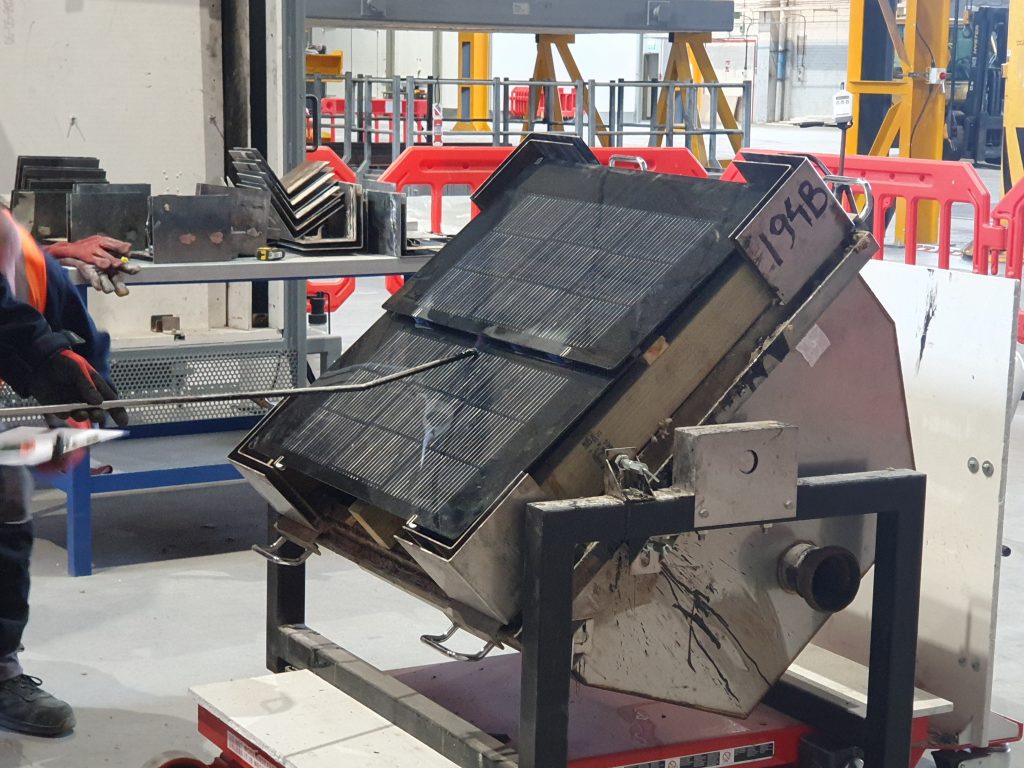
The second stage of test also features a burning brand, but with the addition of simulated wind, and radiant heat. This test is also used to observe any fire penetration, ignition, and the production of smoke, non-flaming droplets, or debris from the test samples.
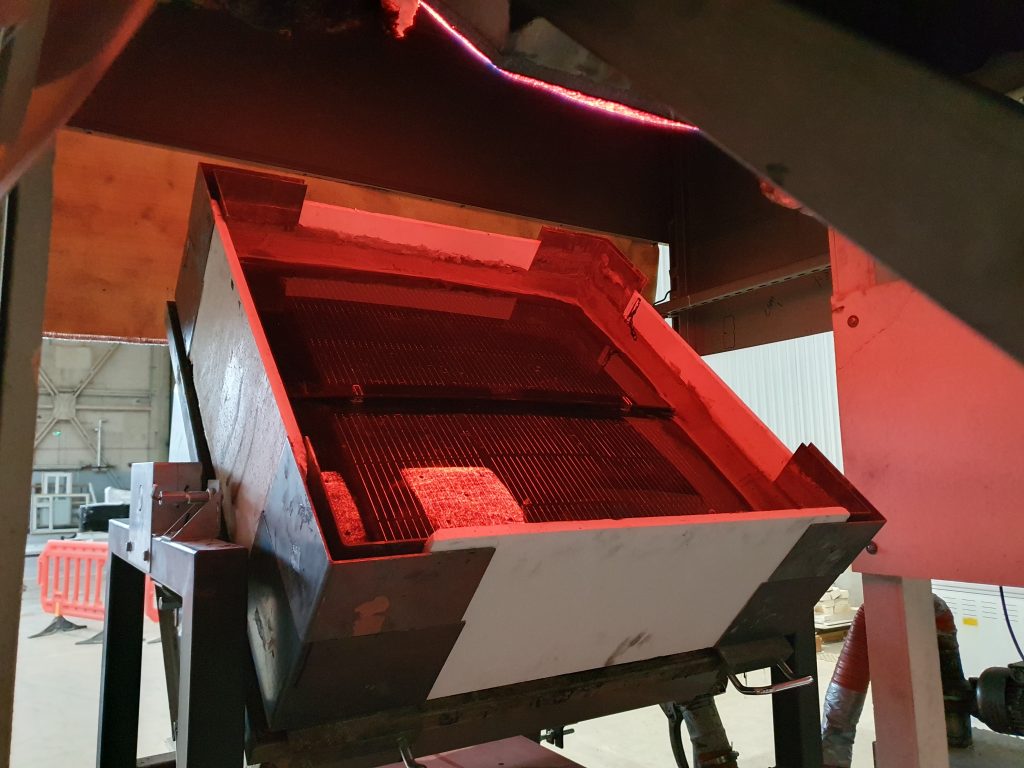
Ignition, flame penetration, production of smoke, flaming droplets, or debris, did not occur.


8th January 2025 – How does a solar tile system work?
Like a traditional solar array that uses solar panels, Solex solar tiles work in the same way and require the same components to provide home-grown electricity to a property.
Solar tiles operate on the basis of the photovoltaic effect. This is where radiation from sunlight is absorbed by a semi-conductor material (monocrystalline silicon in our case) and excites the electrons within the material, causing an electrical current to flow through the panels.
By connecting each solar tile to the next in series, the energy produced by each solar tile accumulates, which over the entire surface of even a single roof can be quite substantial. For example, a 30 square meter roof could provide 5.1 kWp with solar tiles installed, above the national average solar array size of 3.5 kWp. Solex solar roof tiles cost approximately £95 per square meter, and this includes all the mounting equipment required to keep the tiles in place.
However, solar tiles aren’t the only components required for generating free electricity for your home. Another key piece of equipment required is a solar inverter. All solar tiles (and panels) generate electricity in direct current (DC), but a residential property uses alternating current (AC). Because of this, an inverter is required to convert DC into AC for the homeowner to use. Inverters also collect data from the solar array, such as the amount of energy generated over time.
There are several different types of inverters including string inverters, hybrid inverters, micro-inverters, and battery inverters. Which type that would be required for your installation depends on factors specific to your project that are best discussed with a solar installer once the peak energy capacity is known, as well as other project details such as the orientation of the solar tiles, shading obstacles, and whether batteries are required. Inverters vary in cost, and this cost is dictated primarily by the power output the inverter is capable of, as well as the inverter type. For a standard domestic system, the cost of this will be in the region of £500 – £1000.
While not essential for the operation of a solar array, batteries can add great advantages to an installation. Solar tiles will only generate energy when subject to solar radiation, and so will not generate significant energy in low light levels, which are potentially the times you need energy the most. Because of this, batteries can allow you to store your energy at its highest levels of production, when you need it the least (such as the middle of the day), and use it when it’s most required (such as in the evenings).
Additionally, where excess energy is generated by your solar array and sold back to the National Grid, energy companies will pay different rates for energy supplied to them at different times. As with a household’s own use, electricity at peak time is more valuable to an energy supplier than it is in the middle of the day, and batteries can be programmed to take advantage of the grid demand. The sale of excess energy to the grid is possible due to the Smart Export Guarantee scheme.
24th – 26th September 2024 – Solar and Storage Live UK
Solar and Storage Live UK had 15,000 people in attendance and 500 organisations including Solex that were exhibiting. This gave Peter and Max a chance to speak to more key people in the industry about our solar roof tiles, and why they’re a great alternative to solar panels.
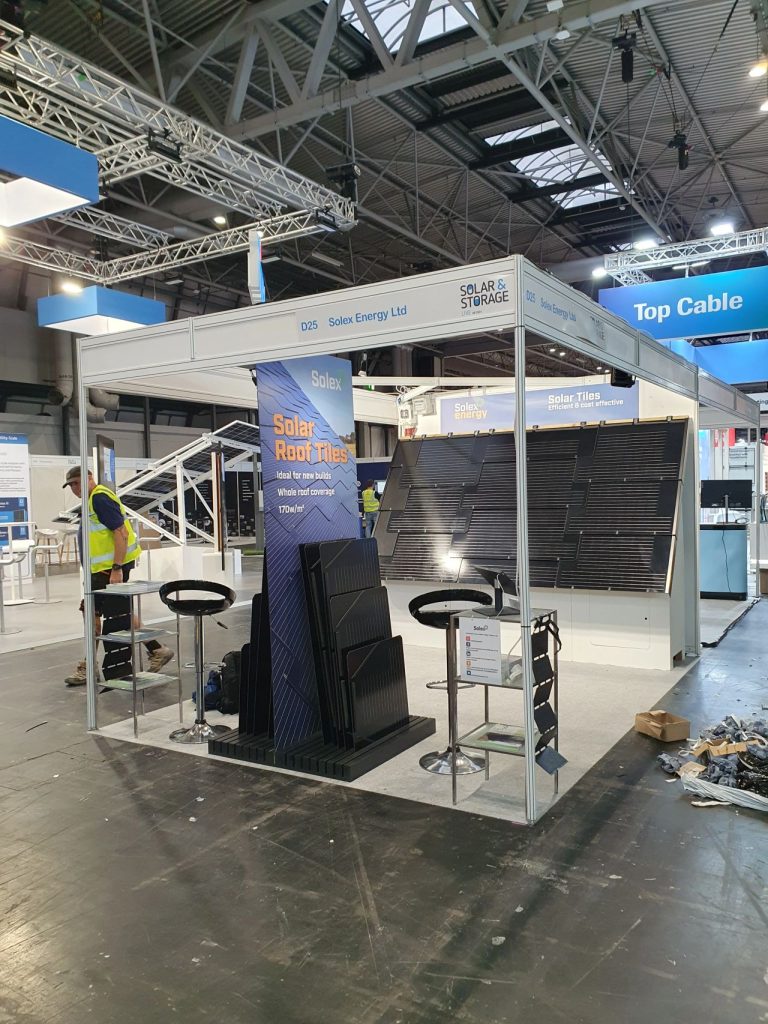
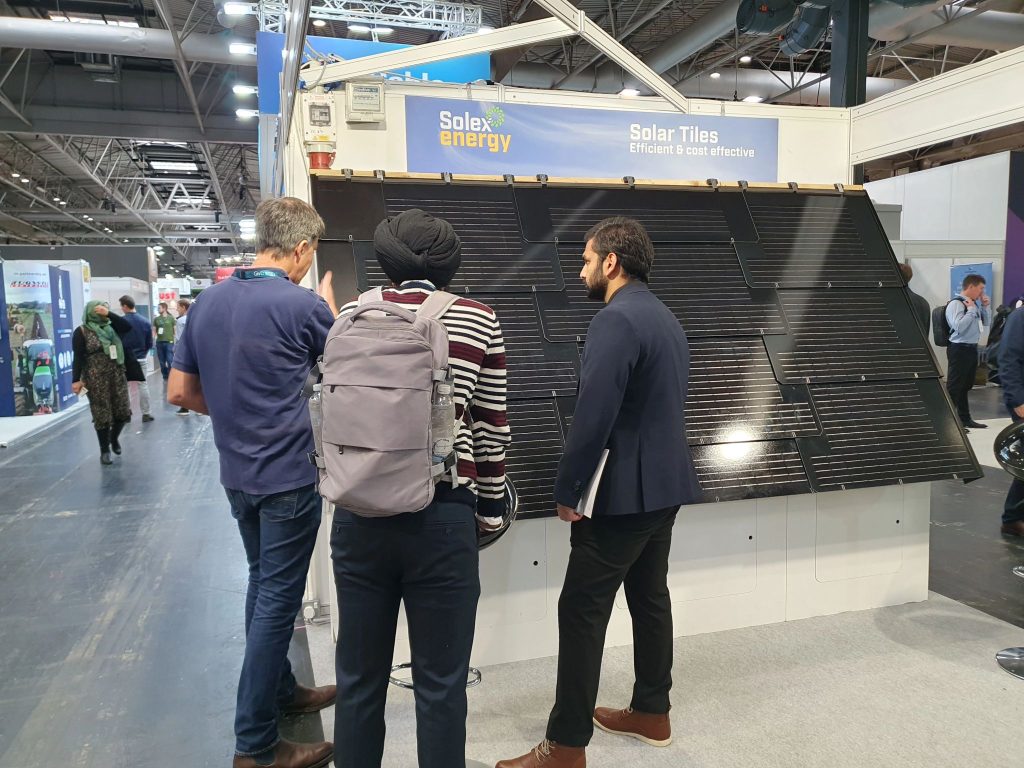
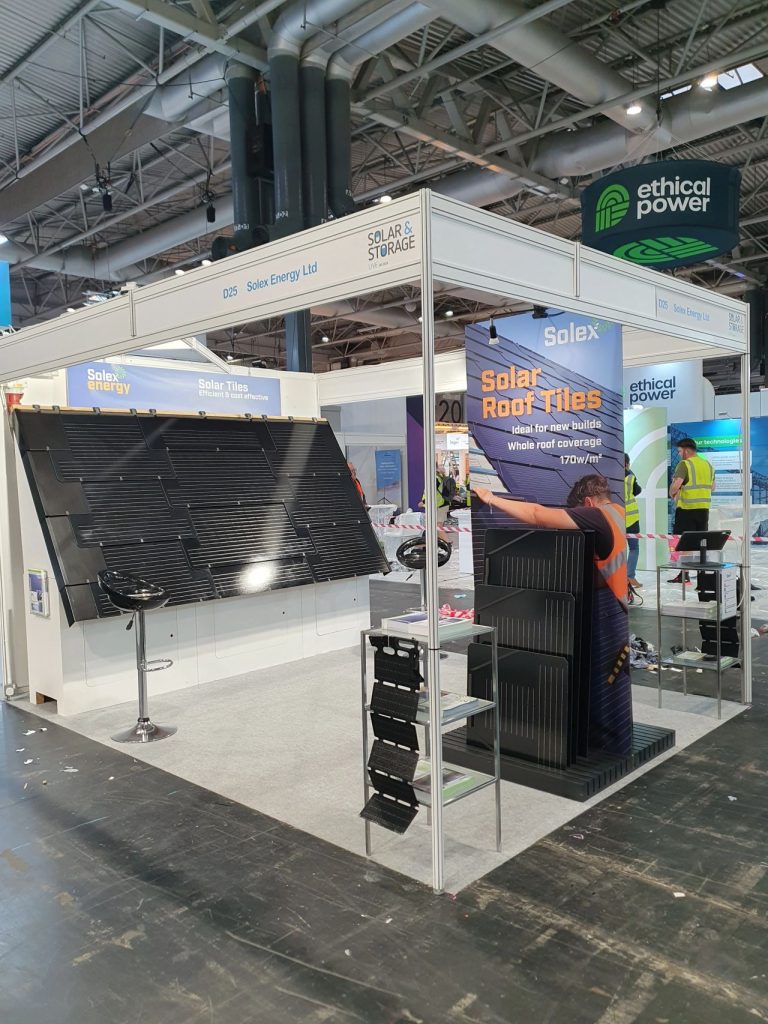
25th – 27th June 2024 – Installer Show
Installer Show is the UK’s largest event for influential installers and specifiers of heat, water, air, and energy technology. Peter and Max were on hand for the 3-day show to speak to tradespeople, purchasers, project managers, and more about our roofing solutions, and how they intergrate with other renewable technologies.
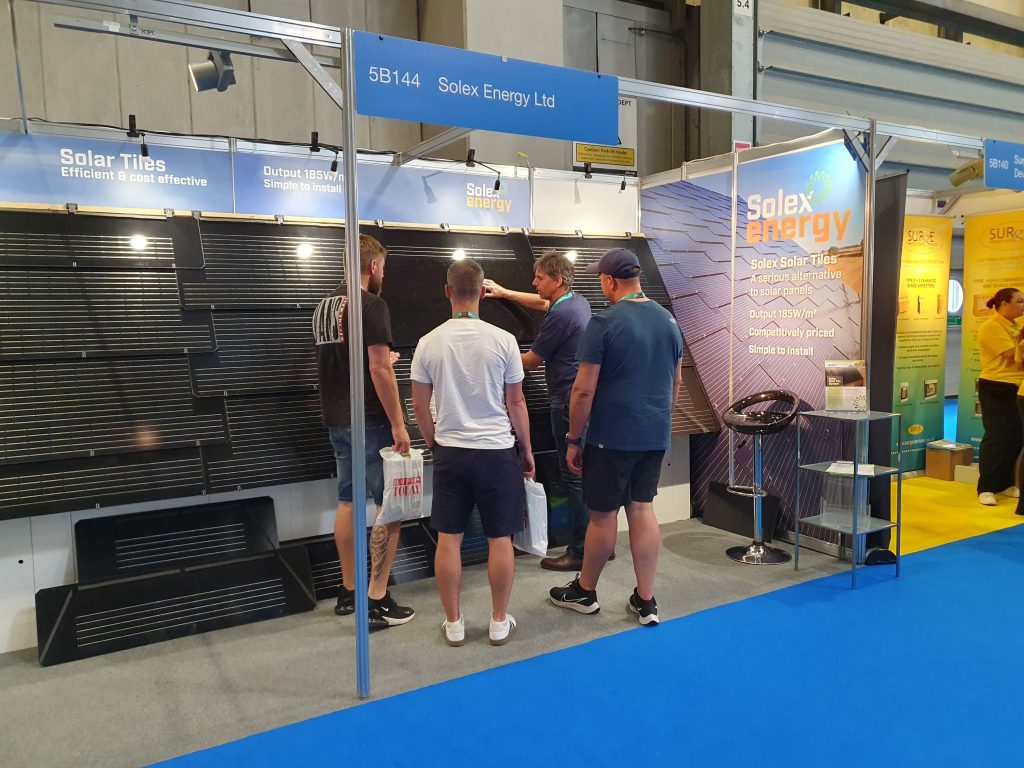
29th – 30th April 2024 – Solar and Storage Live London
Solar and Storage Live London was a 2 day event at EXCEL London, where Peter and Max showcased our solar tiles to solar installers, electricians, property owners, utility companies, and more.
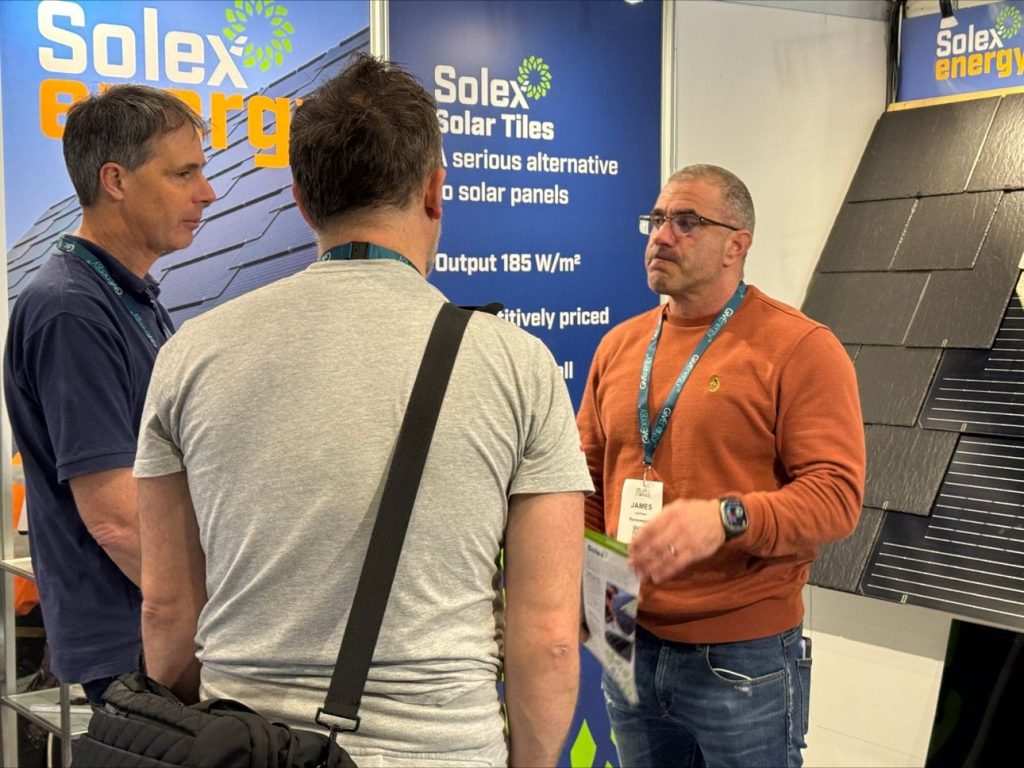
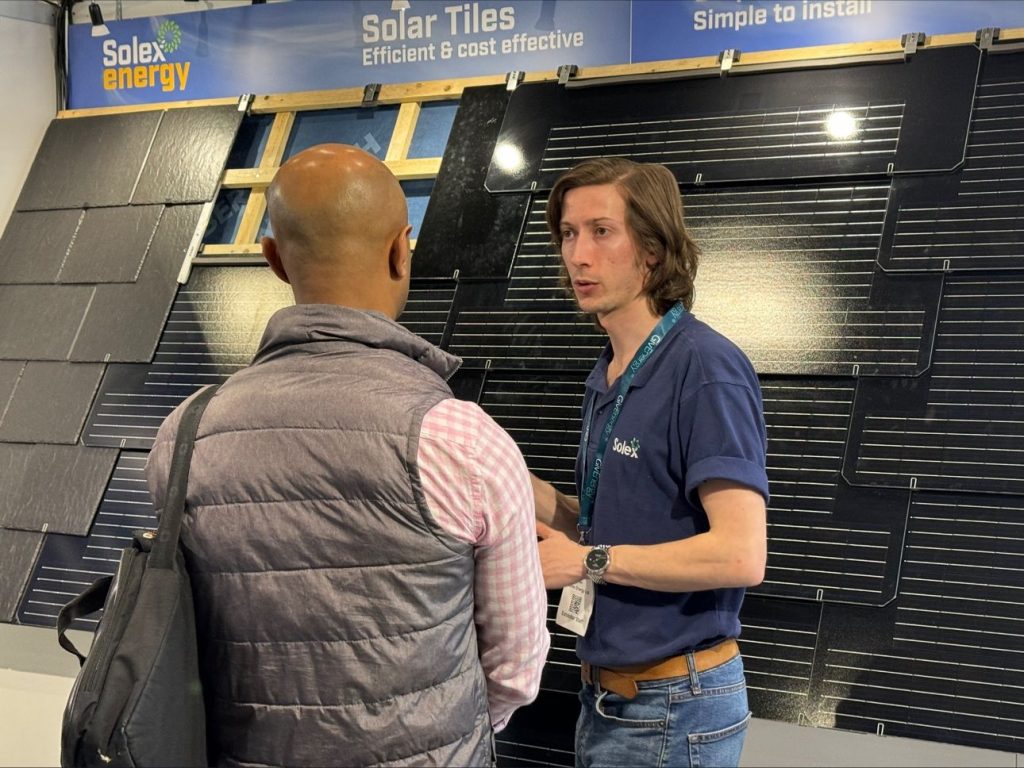
3rd – 5th October 2023 – UK Construction Week
From the 3rd – 5th October 2023 we exhibited at UK Construction Week at the NEC, Birghmingham. This event saw the public release of our solar roof tiles.